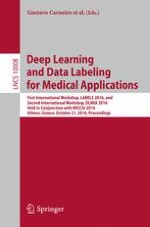2016 | OriginalPaper | Buchkapitel
Longitudinal Multiple Sclerosis Lesion Segmentation Using Multi-view Convolutional Neural Networks
verfasst von : Ariel Birenbaum, Hayit Greenspan
Erschienen in: Deep Learning and Data Labeling for Medical Applications
Aktivieren Sie unsere intelligente Suche, um passende Fachinhalte oder Patente zu finden.
Wählen Sie Textabschnitte aus um mit Künstlicher Intelligenz passenden Patente zu finden. powered by
Markieren Sie Textabschnitte, um KI-gestützt weitere passende Inhalte zu finden. powered by
